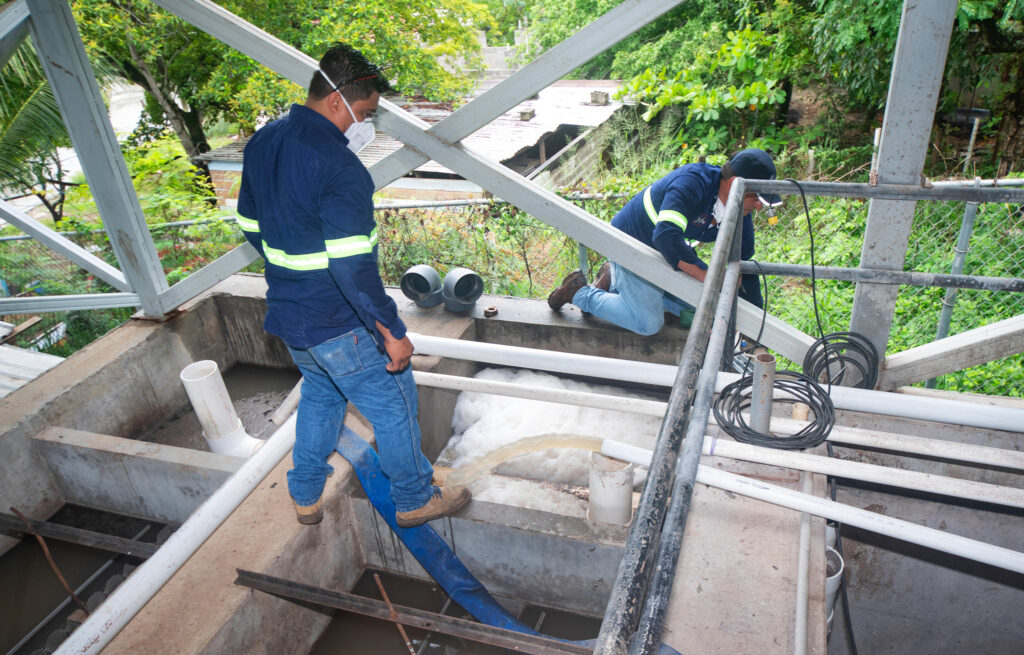Ensuring Ongoing Success and Environmental Protection
Long-term sustainability is crucial for the continued success of wastewater treatment projects, particularly in coastal communities that face financial and infrastructural challenges. Ensuring that these projects remain effective over time requires a comprehensive approach that addresses financial, environmental, and social dimensions. Here are the key components of achieving long-term sustainability:
Robust Financial Planning and Management
Long-term financial sustainability ensures that wastewater treatment facilities can operate effectively without interruption. Key elements include:
- Diversified Funding Sources: Securing a mix of funding sources, including government grants, public-private partnerships, user fees, and international aid, to create a stable financial base.
- Revenue Generation: Implementing reasonable user fees and service charges to generate ongoing revenue, with up to 85% of operational costs covered by community members connected to the system.
- Financial Reserves: Establishing reserve funds to cover unexpected expenses and ensure that the facility can continue operating during financial shortfalls.
Regular Maintenance and Upgrades
Continuous maintenance and periodic upgrades are essential for the long-term functionality and efficiency of wastewater treatment facilities. This involves:
- Preventive Maintenance: Conducting regular inspections and maintenance activities to prevent equipment failures and prolong the lifespan of the facility.
- Scheduled Upgrades: Planning and implementing upgrades to incorporate new technologies, improve efficiency, and meet evolving environmental standards.
- Training and Capacity Building: Providing ongoing training for local personnel to ensure they have the skills and knowledge necessary to operate and maintain the facility effectively.

Environmental Monitoring and Adaptation
Ensuring that the facility continues to protect the environment over the long term requires ongoing monitoring and adaptation. Key actions include:
- Continuous Water Quality Monitoring: Implementing continuous and periodic monitoring of water quality to ensure that treated effluent meets environmental standards and protects downstream ecosystems, including coral reefs.
- Adaptive Management: Using monitoring data to adapt and optimize treatment processes, addressing any emerging issues promptly.
- Environmental Impact Assessments: Conducting regular assessments to evaluate the facility’s impact on the local environment and make necessary adjustments to minimize negative effects.
Community Engagement and Support
Sustained community engagement is vital for long-term project success. This includes:
- Ongoing Education and Awareness: Continuously educating the community about the importance of wastewater treatment and their role in maintaining the system.
- Feedback Mechanisms: Establishing and maintaining clear channels for community feedback and involvement, ensuring that community members can voice concerns and contribute to decision-making processes.
- Inclusive Governance: Involving community representatives in the governance and oversight of the facility to foster a sense of ownership and accountability.
Policy and Regulatory Support
Supportive policies and regulations are critical for ensuring the long-term sustainability of wastewater treatment projects. This involves:
- Enforcement of Standards: Ensuring that local and national governments enforce environmental standards and regulations that mandate proper wastewater treatment.
- Incentives for Compliance: Providing incentives for communities and industries to comply with wastewater treatment requirements, such as tax breaks or subsidies for environmentally friendly practices.
- Policy Advocacy: Engaging in advocacy efforts to promote policies that support sustainable wastewater management and environmental protection.
Resilience to Climate Change
Addressing the impacts of climate change is essential for the long-term sustainability of wastewater treatment facilities, particularly in coastal areas. Key strategies include:
- Climate-Resilient Design: Designing and constructing facilities to withstand extreme weather events, sea level rise, and other climate-related challenges.
- Emergency Preparedness: Developing and implementing emergency response plans to ensure that the facility can continue operating during and after natural disasters.
- Sustainable Water Management: Incorporating water conservation and reuse practices to reduce the facility’s overall water footprint and enhance its resilience to water scarcity.
Ensuring Comprehensive Long-Term Sustainability
Achieving long-term sustainability for wastewater treatment projects in coastal communities requires a holistic approach that integrates financial, environmental, social, and regulatory dimensions. By addressing these key components, we can ensure that wastewater treatment facilities continue to protect coral reefs and support the health and well-being of local populations over the long term.
In conclusion, long-term sustainability is a multifaceted challenge that necessitates careful planning, continuous adaptation, and broad-based support. Through robust financial planning, regular maintenance, environmental monitoring, community engagement, policy support, and climate resilience, we can secure the ongoing success and environmental protection of wastewater treatment projects in coastal communities.